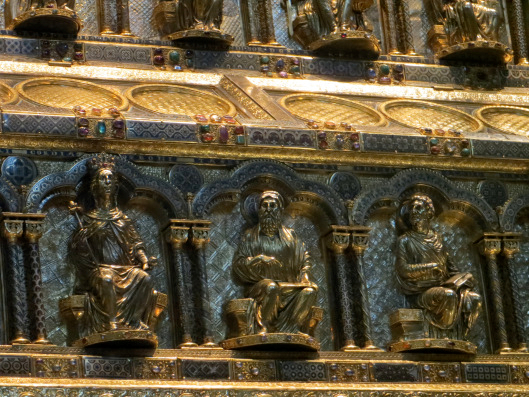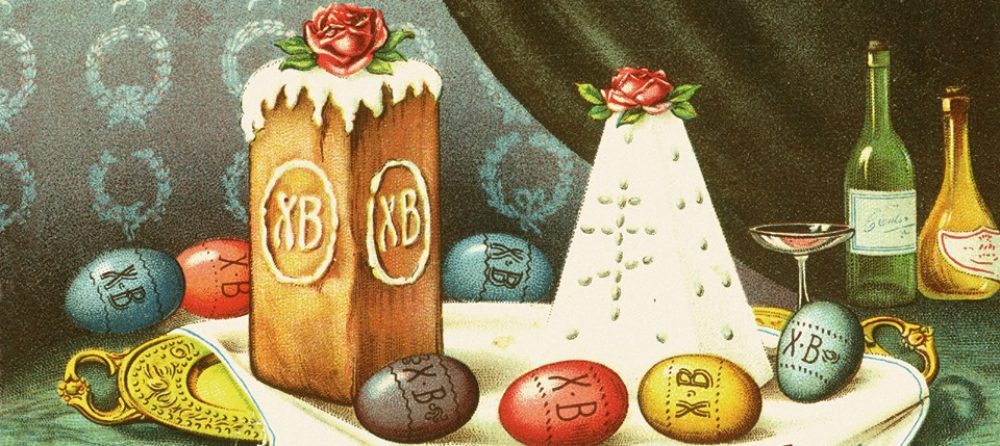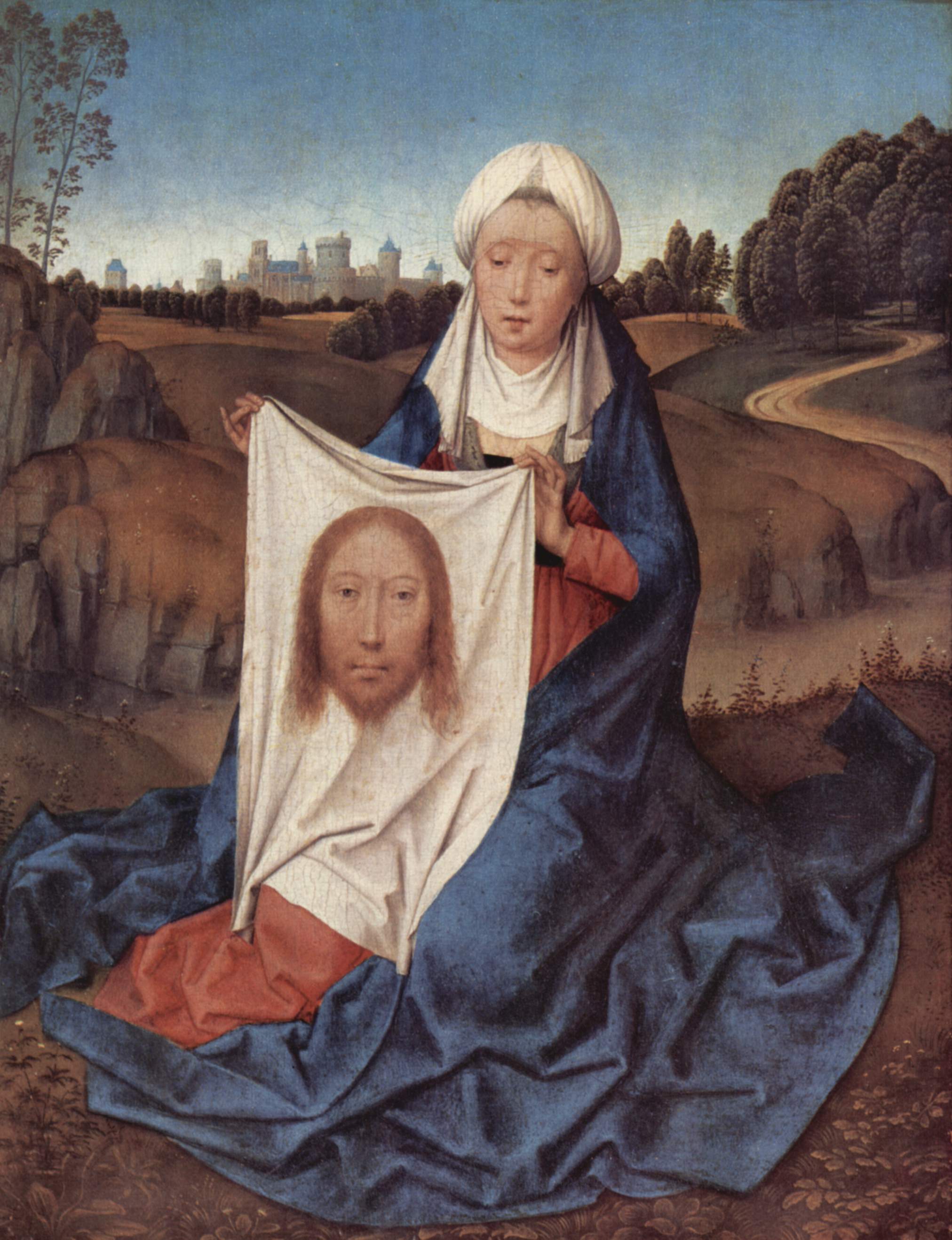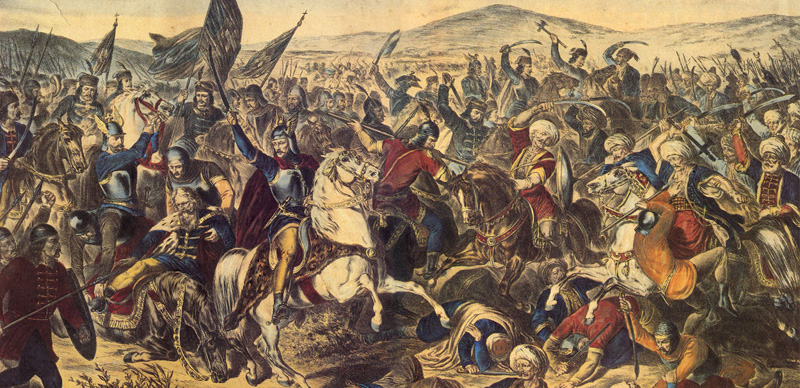
Shrine of the Three Kings (detail), Nicholas of Verdun, gold, silver, and semi-precious stones (1190-1220), Cologne Cathedral, Cologne, Germany.
The Magi were extremely popular in Western Europe during the Middle Ages and Renaissance. They were considered powerful protectors against the “falling sickness” (epilepsy). They were also invoked in all-purpose protective prayers or charms, such as one attributed to Charlemagne.
The Magi were considered to represent the whole of the Gentile world because the three men included an Asian and an African with the European; they underscored the idealized inclusivity of the Christian world. The African magus — and African Christians in Ethiopia, such as the eunuch baptized by the Apostle Phillip in the Acts of the Apostles (8:27) — were looked on as special patrons of the people of Bohemia since both Bohemia and Ethiopia were on the edges of the (western) Christian world. The city of Kandahar in Afghanistan is thought to have been founded by and named for Gaspar, one of the Magi.
The relics of the Magi at Cologne were among the most popular pilgrimage sites in the Middle Ages. Their presence helped bolster the importance of the Germanic bishops both as supporters of the Popes or in opposition to them.
More information about the Magi in the Middle Ages can be found here and here.
The excellent Journey of the Magi by Richard Trexler might by a good thing to read in anticipation of Christmas. Better to read it NOW, before the hectic pre-holiday season arrives!


